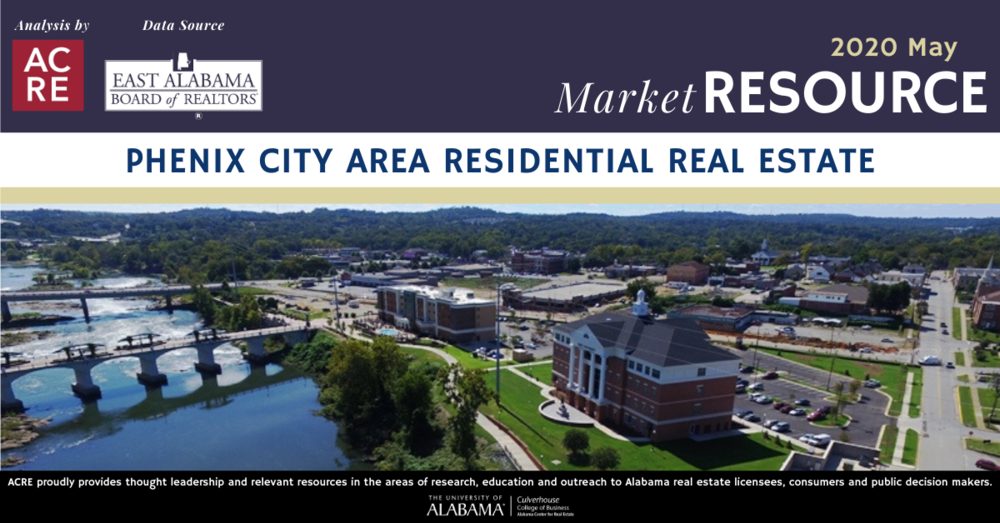Sales: According to the East Alabama Board of Realtors, May residential sales decreased 4% year-over-year from 126 to 121 closed transactions. Following seasonal trends, sales increased 22.2% from April. Sales are down 4.3% year-to-date, and are likely to decline in the months ahead due to the growing economic impact of the pandemic. Two more resources to review: Quarterly Report and Annual Report.
For all of the Phenix City Area’s housing data, click here.
Inventory: Total homes listed for sale in May declined 28.9% year-over-year from 398 to 283 listings. Months of supply (inventory to sales ratio) decreased from 3.2 to 2.3, reflecting a market where seller’s generally have elevated bargaining power.
Pricing: The area’s median sales price in May was $193,000, an increase of 8.8% from one year ago and an increase of 13.6% from April. The differing sample size (number of residential sales of comparative months) can contribute to statistical volatility, including pricing. ACRE recommends consulting with a local real estate professional to discuss pricing, as it will vary from neighborhood to neighborhood.
Homes sold in May averaged 49 days on the market (DOM), 47 days faster than May 2019.
Forecast: May sales were 18 units, or 13%, below the Alabama Center for Real Estate’s (ACRE) monthly forecast. ACRE projected 139 sales for the month, while actual sales were 121 units. ACRE projected a total of 595 residential sales in the area year-to-date, while there were 518 actual sales through May, a difference of 12.9%.
Click here to view the entire monthly report.
The Phenix City Area Residential Monthly Report is developed in conjunction with the East Alabama Board of Realtors to better serve area consumers.
Editor’s Note: All information in this article reflects data provided to the Alabama Center for Real Estate for the time period May 1 – 31, 2020. Thus, the performance represented is historical and should not be used as an indicator of future results, particularly considering the upcoming impact of COVID-19 on the housing market.






